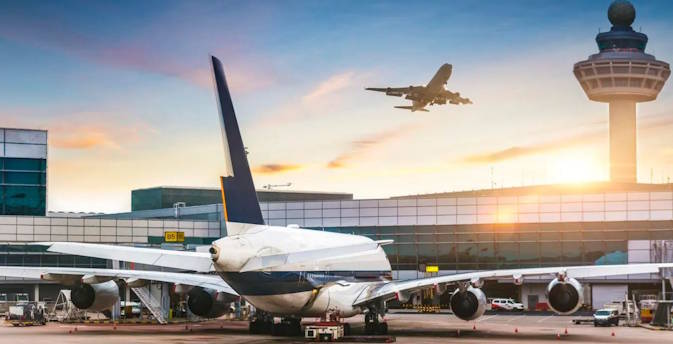
Airport. getty
What Hillary Clinton Gets Wrong About DOGE And Aviation Reform
By Steve Forbes, Forbes Staff.
“With all thy getting, get understanding.”
The recent tragic collision between a commercial regional jetliner and a military helicopter near Washington, D.C., claiming 67 lives, has sparked an intense debate about America’s air traffic control (ATC) system. In a recent exchange on X, former Secretary of State Hillary Clinton attacked Transportation Secretary Sean Duffy’s initiative to modernize our aviation infrastructure through DOGE, writing, “They have no relevant experience. Most of them aren’t old enough to rent a car. And you’re going to let them mess with airline safety that’s already deteriorated on your watch?” Duffy fired back that Clinton needed to “sit this one out.”
The Federal Aviation Administration continues to rely on technology that belongs in the Smithsonian, not in our increasingly congested skies. Clinton’s defense of bureaucratic experience – suggesting that only seasoned Washington veterans should handle aviation modernization – inadvertently proves the point: this mindset is precisely what has kept our ATC system trapped in the past.
The core problem isn’t about the age or experience of those implementing changes – it’s structural. The FAA’s air traffic control operation remains handcuffed by politics and the unpredictability of annual congressional appropriations. When Clinton suggests that “experienced” Washington bureaucrats are the solution, she overlooks how this very bureaucracy has consistently failed to modernize our systems.
The straightforward solution that transcends the current social media debate is removing the entire air traffic control system from government control and establishing an independent, nonprofit entity. This new organization would be self-funded through user fees and governed by all stakeholders – commercial airlines, private aviation, airport authorities, and key suppliers. The FAA would retain safety oversight, but operational control would shift to this dedicated entity.
This isn’t theoretical – it’s proven. Over 60 countries have successfully implemented similar reforms since New Zealand led the way in 1987. These modernized systems have demonstrated remarkable improvements in safety, efficiency, and technological adoption. They can raise capital through bonds for long-term planning, something impossible under current federal constraints.
Clinton’s argument about deteriorating airline safety actually strengthens the case for structural reform. The solution isn’t maintaining the status quo of political oversight – it’s following the successful example of dozens of other nations that have depoliticized their air traffic control systems.
The benefits of this reform are clear and proven. A modernized, independent ATC system would enable swift implementation of cutting-edge technology, reduce delays through improved aircraft spacing, create more efficient routes that cut fuel costs and emissions, enhance safety through updated equipment, and free our aviation system from political budget battles.
Whether DOGE succeeds in its modernization efforts or not, the fundamental problem remains: our ATC system needs structural reform, not just technological updates. The solution is proven and waiting. The only question is whether Washington will finally overcome its addiction to bureaucratic control.
Memo To The FAA—These Reforms To Air Traffic Control Could Prevent Future Disasters
00:00
/
03:50
Memo To The FAA—These Reforms To Air Traffic Control Could Prevent Future Disasters
WATCH
Follow me on Twitter. Send me a secure tip.
Editorial Standards Forbes Accolades
By Steve Forbes
Steve Forbes is Chairman and Editor-in-Chief of Forbes Media. Steve’s newest project is the podcast “What’s Ahead,” where he engages the world’s top newsmakers, politicians and pioneers in business and economics in honest conversations meant to challenge traditional conventions as well as featuring Steve’s signature views on the intersection of society, economic and policy.
From forbes.com